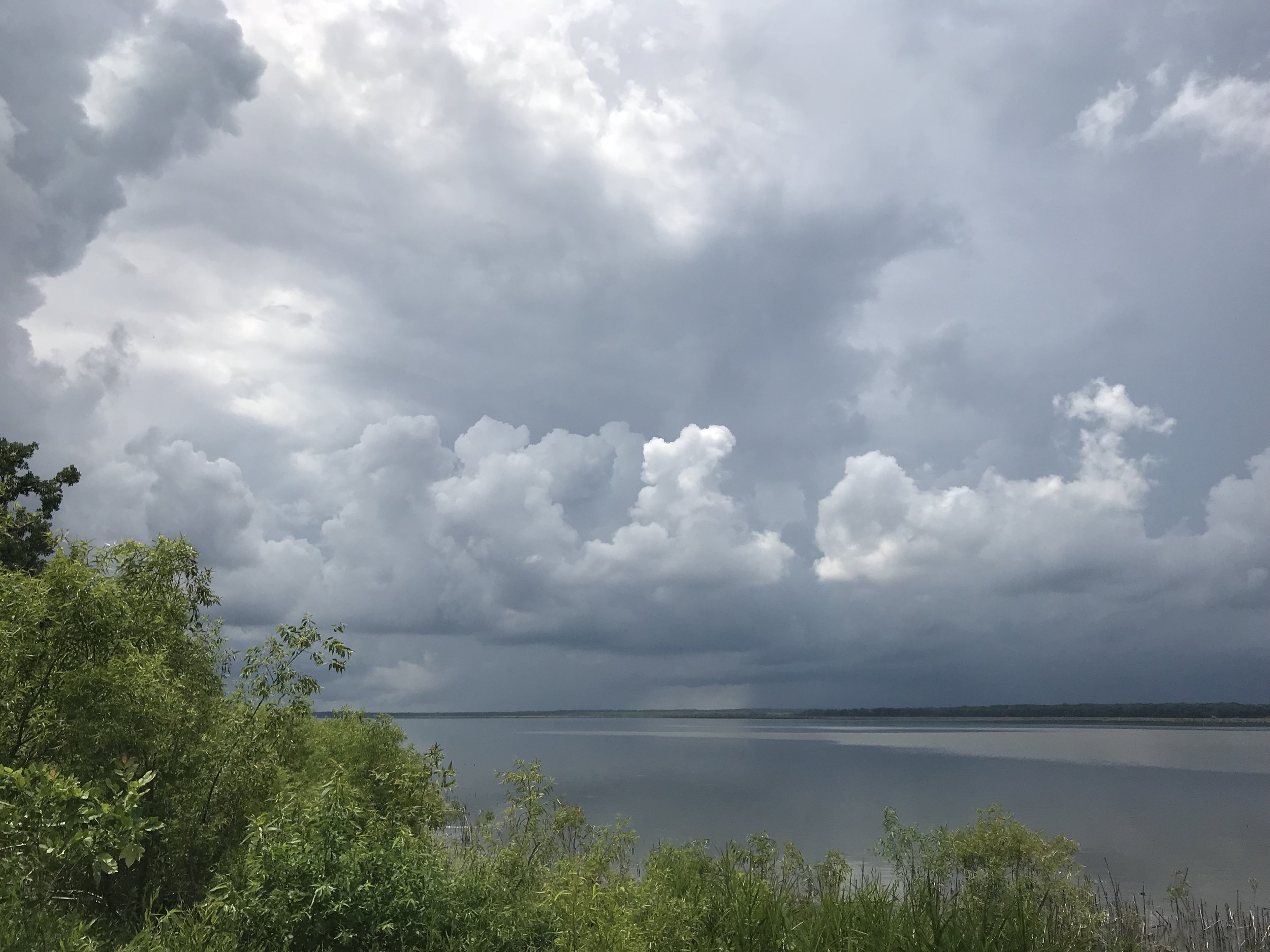Yesterday's cooler temperatures lured me out of the house to explore the area near Frederick. I was curious about the parks, conservation areas and wildlife refuges along the Illinois River. I crossed the river and went into Beardstown and enjoyed stopping at the river overview to see barges and tugboats and bridges.
in Beardstown
From Beardstown, I drove to the Sanganois State Fish Wildlife Area, where I passed through farm fields and timber and then parked the van near a boat ramp. I took my bike off the rack and rode a few miles over the gravel roads seeing a variety of birds -- blue birds, redwing blackbirds, woodpeckers, terns, doves, and herons. I also saw a fawn and doe. The fawn seemed quite young with legs still spindly. I stopped and watched from about 300 feet away. The fawn was curious about me, but the doe had other ideas, so I turned around and pedaled back to the van.
I then drove to the Chautauqua National Wildlife Refuge, where there is a nice gravel/boardwalk trail that winds through the woods and offers several views of the lake, including the one shown above. At one overlook, I sat and listened to a mockingbird running through its repertoire while watching the thunderstorms from across the lake. As I left the refuge, I think I saw a baltimore oriole or something similar -- a bright flash of orange in the trees.
My next stop was in the Emiquon National Wildlife Refuge, where there are great expanses of wetlands. I saw a few American pelicans. Learning about the derivation of words is always interesting, and "emiquon" was a word completely unfamiliar to me. I heard later that delectable cantaloupes and other melons are grown in the area, so the river valley continues to support those kinds of plants. Ancient people were part of a vast trading network and fostered agriculture, including growing grains. Corn remains a major crop for the area.
The storms were now directly overhead so when I saw signs for the Dickson Mounds Museum, I decided to check that out. I enjoyed learning about the people who lived in the area since about 12,000 years ago and seeing the ancient tools, housewares and jewelry, learning about evolving ways of living off the land and the interpretations of their cosmologies.
After leaving the museum, I drove along the Illinois River and stopped at Anderson Lake. The shady campgrounds and picnic areas with views of the lake looked very inviting, and a couple of small groups had set up camps.
These kinds of days fuel my imagination and work, help me connect to a sense of place and restore my spirit.
Thunderstorms and reflections across Chautauqua Lake









